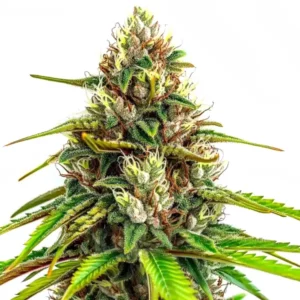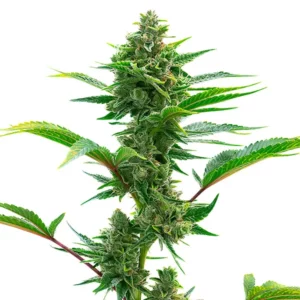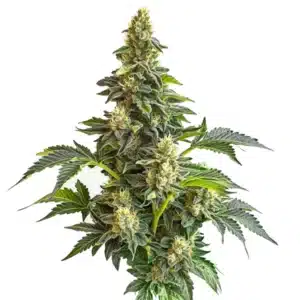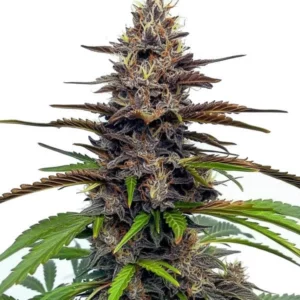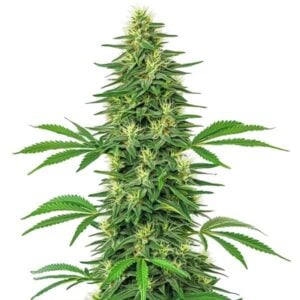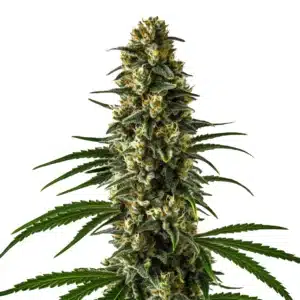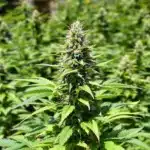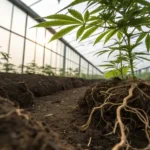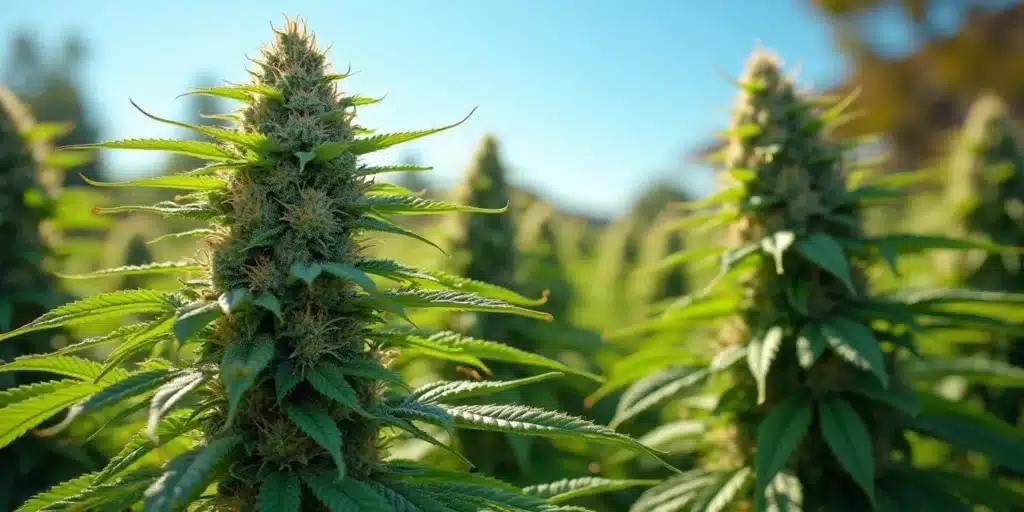
Best Nutrients for Outdoor Flowering Stage
When cultivating cannabis outdoors, several factors come into play for a fruitful harvest. Among them, nutrients play a crucial role, particularly during the flowering stage. The best nutrients for outdoor flowering stage can significantly enhance flower formation, boost yield, and improve overall bud quality. This phase marks the transformation of the plant from leaf growth to flower development, making it essential to know what to offer your plants during this critical time.
Understanding the complexities of your plants’ needs can be akin to deciphering a language. Just as one must understand the context and nuances of a conversation, growers need to grasp the specific nutrient requirements of cannabis during flowering. With some time and patience, you’ll foster a thriving garden that produces the best flowers imaginable.
Recommended Strains
Animal Cookies
|
|
THC | 22% - 27% (High) |
|
|
Type | Feminized |
|
|
Yield | High |
|
|
Phenotype | 50% Indica / 50% Sativa |
24k Gold Autoflower
|
|
THC | 18% - 24% (Medium) |
|
|
Type | Autoflowering |
|
|
Yield | Medium |
|
|
Phenotype | 40% Indica / 60% Sativa |
Nutrient Breakdown: Key Elements for Flowering
During the flowering stage, cannabis plants require different nutrients compared to their vegetative phase. For growers aiming to maximize their yields, choosing the best nutrients for outdoor flowering stage is essential. The main nutrients to concentrate on include nitrogen (N), phosphorus (P), and potassium (K), collectively known as NPK. Each of these elements serves a unique purpose that supports healthy flower development, and understanding their functions can truly elevate your growing game.
To ensure your plants receive the right balance, consider the specific growing conditions and strain characteristics. Factors such as the soil type, climate, and even the size of your plants can influence their nutrient needs. By recognizing these nuances, you’ll set yourself up for a successful flowering stage.
Nitrogen: The Leaf Builder
Nitrogen is vital during the early part of the flowering stage, particularly for establishing lush foliage. While its role diminishes as the plant progresses, strong leaves are essential for effective photosynthesis. A well-adjusted nitrogen level provides the necessary energy for flower production. However, it’s a balancing act—too much nitrogen can inhibit flower growth, so aim for moderation.
By carefully considering the right amount of nitrogen, you can encourage vigorous leaf development while facilitating the transition toward flowering. This dual approach ensures your plants remain sturdy and healthy—qualities that are essential for robust blooms later in the cycle.
Phosphorus: The Flower Formulator
Phosphorus is the star player when it comes to flower development. This nutrient is instrumental in supporting root growth, facilitating energy transfer within the plant, and synthesizing nucleic acids, which are vital for robust flowering. As your plants enter the flowering stage, especially outdoors, using the best nutrients for outdoor flowering stage becomes essential. High levels of phosphorus, combined with other key nutrients, are increasingly important to achieve those large, vibrant buds.
Opting for fertilizers that list phosphorus prominently on their labels can significantly enhance your flowering phase. This focus on phosphorus not only improves flower size but also contributes to the potency and overall quality of the buds. By making phosphorus a priority, you’re setting the stage for a truly impressive harvest.
Potassium: The Growth Enhancer
Potassium is another indispensable nutrient during the flowering stage. It aids in water regulation, enzyme activity, and photosynthesis. This nutrient bolsters the plant’s overall strength, making it more resilient to environmental stressors such as drought and pests.
Introducing potassium early in the flowering phase establishes a solid foundation for the plant, equipping it for the demanding process of bud formation. Choosing a fertilizer rich in potassium will go a long way in enhancing flower production and improving the plant’s overall health—attributes that’ll make your outdoor grow stand out.
Promos & Deals
Best Nutrient Sources for Your Outdoor Grow
Utilizing the correct nutrient sources is paramount for optimum plant growth. Both organic and synthetic options are available, each with unique advantages suitable for outdoor growers. Let’s explore some exemplary choices that can provide your plants with the nourishment they need during the flowering stage.
Whether you opt for natural or manufactured fertilizers, your decision will often reflect your growing philosophy. Choosing the best nutrients for outdoor flowering stage is key to maximizing bud development and overall plant health. Organic options can enrich your soil and promote a naturally balanced ecosystem, while synthetic fertilizers can offer a more immediate nutrient supply. Knowing your growing style will help you choose the best products.
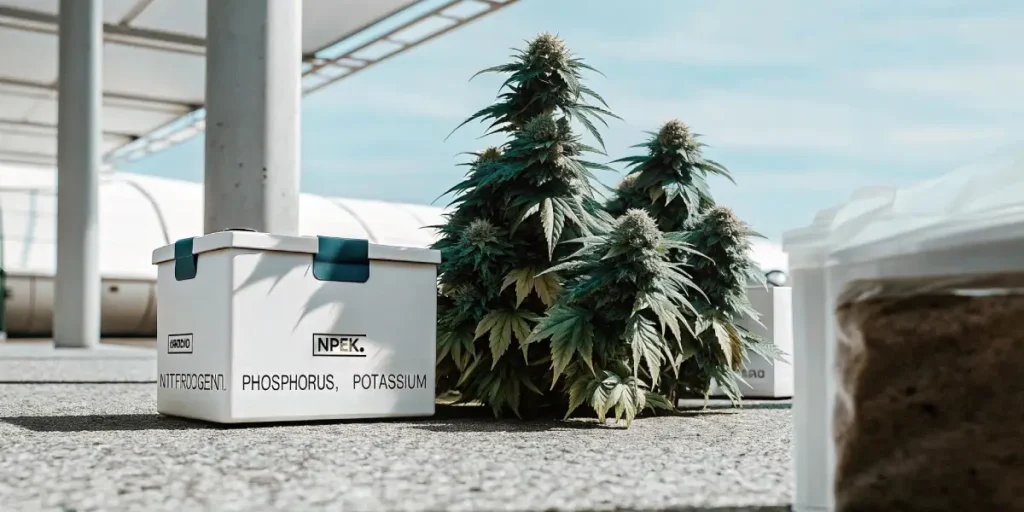
Organic Nutrients
- Bone Meal: This natural source of phosphorus effectively promotes robust root systems and increases bud size, making it a favorite among organic growers.
- Fish Emulsion: This nutrient-rich product provides nitrogen and trace elements essential for overall plant vitality. It’s particularly useful when initiating flower growth.
- Kelp Meal: Loaded with potassium and beneficial micro-nutrients, Kelp Meal enhances the plant’s immune system while promoting healthy growth during flowering.
In addition to these options, consider how different organic fertilizers interact with your soil. Some are slow-releasing, which aligns with a more hands-off approach, while others might require more frequent applications. Finding the right balance can lead to a lush garden full of vibrant blooms.
Synthetic Nutrients
- Liquid Bloom Fertilizers: These specialized fertilizers have a balanced NPK ratio, allowing for easy absorption by plants, crucial during the flowering stage.
- Slow-Release Granules: These products deliver consistent nutrients over time, minimizing the need for frequent feeding while ensuring a steady supply of essential elements.
- Soluble Nutrients: Perfect for dissolving in water and using during irrigation, these options can yield immediate benefits for your plants.
Synthetic nutrients can often be finely tuned, ensuring that your plants receive exactly what they need at each growth stage. They also provide growers with the ability to rapidly address any nutrient deficiencies, though it’s crucial to follow feeding guidelines to prevent imbalances.
Timing Your Nutrient Feedings
Understanding the timing of your nutrient feedings is critical for successful plant development. Over-fertilizing can lead to nutrient burn, while under-fertilizing may stifle growth and flowering potential. A good practice is to tailor your feeding schedule based on the specific characteristics of your strain and its needs.
The flowering phase typically lasts around 8 to 10 weeks, with nutrient feeding beginning every 1-2 weeks. However, it’s essential to adjust your approach based on how your plants respond. Monitoring for any signs of deficiencies or excesses is key in fine-tuning your feeding schedule, allowing for greater adaptability as the flowering phase progresses.
Monitoring and Adjusting pH Levels
Monitoring pH levels is crucial for optimized nutrient absorption. Cannabis thrives in a slightly acidic environment, with an ideal pH range of 6.0 to 6.5 for soil growth. If your soil pH strays from this range, your plants may have difficulty absorbing essential nutrients, leading to deficiencies and other growth issues.
Investing in a pH meter or test strips can help maintain the correct pH levels. If your measurements indicate an imbalance, consider using pH adjustments solutions to restore equilibrium. Regular monitoring creates a nurturing environment for your plants, ensuring they will flourish during the flowering stage.
Three Strains to Consider for Outdoor Growing
The choice of strain can significantly influence your nutrient strategy. Some strains are better suited for outdoor climates and have specific nutrient requirements during flowering. Here are three excellent choices available on Blimburn Seeds that you might consider:
- Blue Dream: This well-balanced strain flourishes outdoors, responding well to a thoughtfully balanced nutrient regimen and leading to an abundant yield.
- OG Kush: An all-time favorite among growers, OG Kush thrives on higher phosphorus levels that encourage superior bud formation and quality.
- Girl Scout Cookies: Known for its resilience and impressive yields, providing a consistent feeding schedule tailored to its needs can maximize its potential.
By selecting strains that align with your growing practices, you can tailor your nutrient contribution for optimal results. This alignment not only benefits the plants but also enhances your overall growing experience.

Preventing Nutrient Burn and Deficiencies
Maintaining a balance of nutrients is vital during the flowering stage. Nutrient burn occurs when plants are overwhelmed with nutrients, leading to symptoms such as leaf discoloration and scorching. Early detection of symptoms can prevent detrimental effects on your harvest.
- Regularly examine leaves; if the tips begin to turn yellow or brown, it may be an indicator of nutrient overload.
- On the flip side, if leaves are appearing yellow and wilting, you may be facing a deficiency, often linked to low nutrient levels or inadequate pH.
Identifying and responding to these signs is crucial for a healthy flowering phase. Keeping a close eye on your plants enables you to act swiftly, whether that means adjusting your nutrient feeding or addressing pH levels.
FAQs about Best nutrients for outdoor flowering stage
What is the best fertilizer for the flowering stage?
Choosing the right fertilizer during flowering should focus on those with a higher phosphorus content. Fertilizers specifically formulated for blooming stages typically possess the ideal NPK ratio to support healthy and robust bud development. Additionally, organic options like bone meal and fish meal can also work wonders.
Can I use the same nutrients I used during vegetative growth?
While some nutrients can be beneficial throughout the entire growth cycle, emphasis during flowering shifts significantly towards phosphorus and potassium. Transitioning to bloom-specific fertilizers will help cater to the unique needs of your flowering plants more effectively.
How often should I feed my plants during flowering?
Most growers find that feeding every 1-2 weeks suits their outdoor flowering plants well. However, it’s important to monitor your plants closely, adapting your feeding schedule based on signs of either nutrient deficiency or excess. It’s often wise to start with smaller amounts of nutrients and gradually increase as needed.
Is organic or synthetic nutrients better for outdoor cannabis?
This ultimately comes down to personal preference. Organic fertilizers tend to enrich soil health and foster beneficial microbial life, while synthetic options can provide precise nutrient ratios and immediate results. Each method can be successful if approached thoughtfully and appropriately.
How can I tell if my plants are getting too many nutrients?
Signs of nutrient burn include yellowing or browning leaf tips, stunted growth, and curling leaves. If you notice these symptoms, it’s a good idea to flush your plants with clean water to remove any excess nutrients and reevaluate your feeding regimen to create a more balanced nutrient environment.



